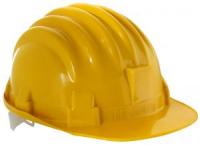- Posts: 19
- Thank you received: 0
Reducing Cumulative Trauma Disorders
- John Jacobs
-
 Topic Author
Topic Author - Offline
- New Member
-

Cumulative Trauma Disorders (CTD’s) are strains that result from long-term repetitive motion or from continually working in an awkward position. Strains commonly occur in the wrists, arms, shoulders or back, affecting the body’s joints and surrounding muscles and tendons.
CTD’s are said to be today’s fastest growing occupational problem, affecting all types of employees, from computer operators to construction workers. Modern equipment, tools and machinery have increased production capabilities in many ways. But in some cases, they have also increased the potential for strain injuries in people. These disorders not only cause great discomfort, they can also affect a person’s employability and personal lifestyle choices.
SUGGESTIONS FOR REDUCING YOUR EXPOSURE TO CTD’S:
- Do warm-up exercises before beginning physically demanding tasks (take a tip from athletes).
- Plan ahead, if you will be doing a job that is awkward--think of ways to make it easier.
- Rotate your work position, to change how muscles are used during your work shift.
- Use the proper tool for the job to avoid awkward movements and the need for overexertion.
- Take a rest break when fatigue sets in. Just a few minutes can make a difference.
- Carefully stretch tired or overworked muscles to improve circulation and relieve tension.
- When appropriate, use anti-shock or anti-vibration gloves.
- Always use proper lifting techniques. Back strain is one of the most common CTD’s.
- When using hand tools keep your wrists in a “neutral” position, as opposed to repeatedly bending them up, down or sideways during work tasks.
Just because a co-worker is not affected by a physically demanding task, don’t ignore messages your body sends you. Although humans share many physical characteristics, people are often different in terms of their physical strengths and weaknesses.
All muscle discomfort and fatigue is not a cumulative trauma disorder. Everyone experiences occasional aches and pains from both work and play—especially when you are not used to the activity. Nevertheless, awkward, repetitive work positions can result in long-term physical problems, so it’s up to you to avoid these in whatever ways you can. If the ache doesn’t go away within a day or two, follow the above suggestions.
If you have early symptoms of chronic discomfort, report it immediately to your supervisor. The sooner a better tool or work position can be incorporated into your work activities; the sooner those symptoms can be controlled.
Please Log in or Create an account to join the conversation.
